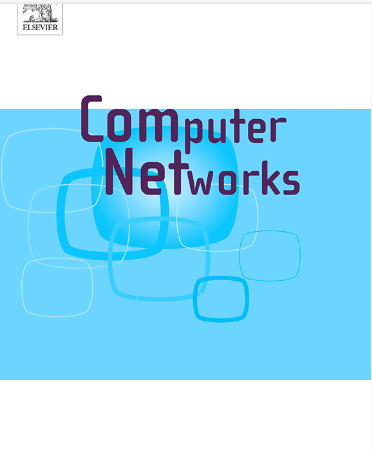Discrete dimensional coordinate scheme for distributed aggressive forwarding in mobile ad-hoc networks: An effective approach
IF 4.4
2区 计算机科学
Q1 COMPUTER SCIENCE, HARDWARE & ARCHITECTURE
引用次数: 0
Abstract
The simplistic approach of greedy forwarding (GF) makes it much more popular on resource-crunched wireless mobile networks. The GF also has some major drawbacks in dealing with local minimums and cross-link connections (Lee et al., 2010) [1]. We researched the reason behind it and found out that the Cartesian coordinate system and method of distance calculation (Euclidean distance) are the reasons behind it. We propose a discrete-dimensional coordinate system (DDCS) and greedy forwarding designed over it, i.e., DDCS-GF (Discrete Dimensional Coordinate System-based Greedy Forwarding). DDCS-GF outperforms the classic GF in dealing with cross-link and local minimum problems. DDCS-GF is better compatible with MANET as it has a decentralized approach for the localization of mobile nodes. Simulation results show that the packet delivery ratio of DDCS-GF is at least 2%–3% higher than that of classic greedy forwarding approaches over the mobile ad hoc network. By extending the number of viable routes and decreasing energy waste from local minimums and collisions, it also extends the network lifetime by 2%–4%.
移动自组网中分布式主动转发的离散维坐标方案:一种有效方法
贪心转发(GF)的简化方法使其在资源紧张的无线移动网络中更受欢迎。GF在处理局部最小值和交叉链接连接方面也存在一些主要缺陷(Lee et al., 2010)。我们研究了背后的原因,发现笛卡尔坐标系和距离计算方法(欧几里得距离)是背后的原因。我们提出了一种离散维坐标系(DDCS)和在其上设计的贪婪转发,即DDCS- gf (Discrete Dimensional coordinate system -based greedy forwarding)。DDCS-GF在处理交联和局部最小问题方面优于经典GF。DDCS-GF与MANET的兼容性更好,因为它采用了分散的方法来定位移动节点。仿真结果表明,在移动自组网中,DDCS-GF的分组传输率比经典贪婪转发方法至少提高2% ~ 3%。通过增加可行路由的数量,减少局部最小值和碰撞造成的能量浪费,该方法还将网络寿命延长了2%-4%。
本文章由计算机程序翻译,如有差异,请以英文原文为准。
求助全文
约1分钟内获得全文
求助全文
来源期刊

Computer Networks
工程技术-电信学
CiteScore
10.80
自引率
3.60%
发文量
434
审稿时长
8.6 months
期刊介绍:
Computer Networks is an international, archival journal providing a publication vehicle for complete coverage of all topics of interest to those involved in the computer communications networking area. The audience includes researchers, managers and operators of networks as well as designers and implementors. The Editorial Board will consider any material for publication that is of interest to those groups.
 求助内容:
求助内容: 应助结果提醒方式:
应助结果提醒方式:


